The Importance of Monitoring your Application Performance

Application performance monitoring is vital for organizations to maintain and improve their applications. It allows users to monitor the various various application components and component’s performance, identify issues, and take corrective actions when needed.
Application performance monitoring enables organizations to understand better how customers or employees use their applications and can identify potential bottlenecks that could limit user experience or impact overall productivity.
This article will discuss the importance of application performance monitoring tools and how it can be used to ensure optimal results from an organization’s software solutions.
On this page:
- What is Application Performance Monitoring?
- What are the Benefits of Monitoring Application Performance?
- How does Application Performance Monitoring Work?
- What are the Different Types of Application Performance Monitoring?
- What Metrics Should you Monitor?
- What Tools are Available for Monitoring Application Performance?
- How can you Use Application Performance Monitoring?
- What are the Challenges of Application Performance Monitoring?
- How can you Optimize your Application Performance?
- Application Performance Monitoring Best Practices
What is Application Performance Monitoring?
Application Performance Monitoring (APM) is essential for the application health of modern applications for any business or organization.
It offers a cost-effective and time-saving way to optimize the performance of applications, websites, and services running in production environments.
With APM tools, users can gain detailed insights into their application’s overall performance, identify trends, detect potential performance issues well before they get out of hand, and plan accordingly to prevent future app or performance issues or problems.
This makes it possible to maintain high availability levels with minimal disruption while keeping workloads running optimally.
In addition to real user monitoring and providing valuable information about system performance, the APM solution helps teams improve customer experience through better visibility into real user experiences across different platforms and devices.
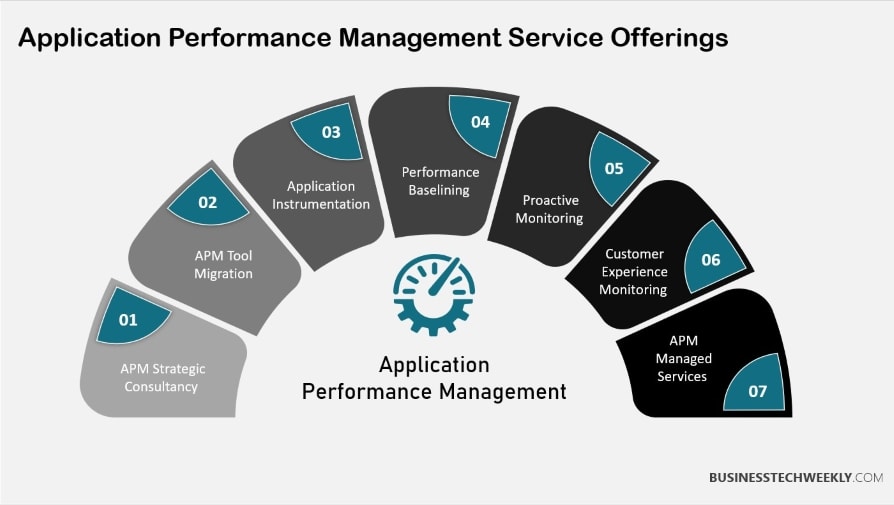
What are the Benefits of Monitoring Application Performance?
Monitoring application performance is essential for the success of a business or organization. It allows teams to understand and track how their applications are performing, which can help them identify any potential issues before they become major problems.
With application monitoring tools, businesses can develop cost-effective and proactive strategies to scale and improve business outcomes through team collaboration and platform integration.
By using monitoring tools, organizations can monitor key metrics and measure performance and bottlenecks such as latency, throughput, availability, scalability impact relevant data amount, and resource utilization in real time.
This makes it easier to quickly address discrepancies or changes in an application component’s various performance metrics while proactively planning with the data collected from these performance metrics.
Monitoring also helps organizations take advantage of new technologies faster by giving them insights into how their systems will perform when scaled up or down.
Additionally, having access to this data helps teams collaborate more efficiently through shared visibility over the same application component’s health status.
Organizations have much to gain from investing in proper monitoring solutions for their applications, enhanced customer experience due to improved response time; quicker identification of problems leading to faster resolutions; better understanding of user behavior patterns; increased agility via proactive strategies; reduced costs associated with downtime; and improved scalability impacts on platforms.
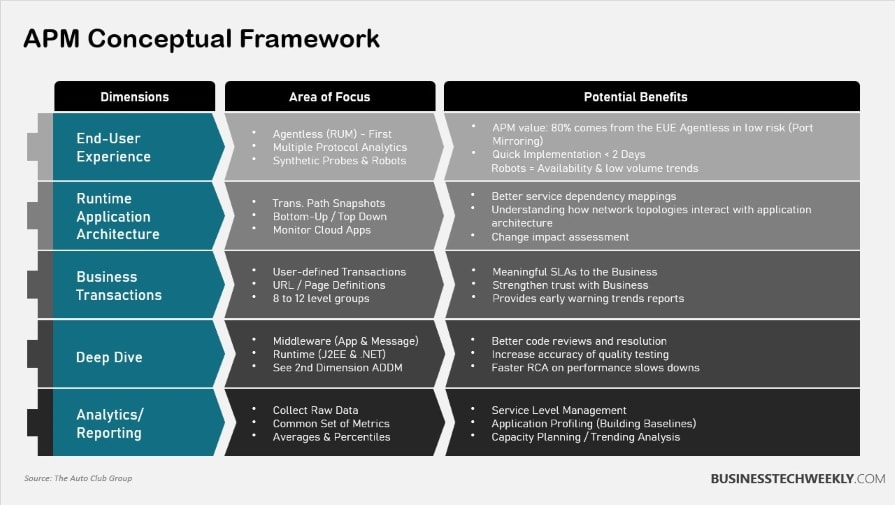
How does Application Performance Monitoring Work?
Monitoring application performance is essential for businesses today, as it allows them to identify and resolve any issues that may arise quickly.
Understanding how application performance monitoring works can help organizations be more cost-effective, data-driven, and proactive in their analysis and troubleshooting efforts.
Application performance monitoring (APM) involves gathering detailed information about the behavior of software components in an application over time.
The collected data includes metrics like response times, throughputs, errors, resource utilization levels, and other key indicators related to the health system availability app performance of the network monitoring the system.
This data is then used to understand how the application behaves under certain conditions and detect anomalies or weaknesses in its design.
Additionally, APM tools provide powerful visualization capabilities so users can quickly discover patterns within the data gathered from data and gain insights into where improvements need to be made.
Furthermore, these tools allow organizations to proactively monitor applications for potential problems before they become critical, which could lead to costly downtime or lost revenue.
The benefits of using a robust APM tool are clear:
- Reduced cost associated with resolving complex technical issues
- Improved customer satisfaction through quicker resolution times
- Enhanced visibility into system usage trends; deeper insight into overall system health
- Greater control over operations via automated alerts when pre-defined thresholds are exceeded
- Ability to diagnose problems faster with better access to log files and debugging info
- Increased productivity by leveraging real-time analytics of user actions within an app
- Easier troubleshooting thanks to comprehensive logging capabilities
What are the Different Types of Application Performance Monitoring?
Application performance monitoring is essential in understanding the effectiveness of software applications. It encompasses a variety of methods for measuring application performance, including:
- Time series analysis involves collecting data points over specific intervals to detect trends and identify issues with application performance.
- Server log analysis can track events such as user interactions or system errors related to application performance.
- Synthetic testing offers insight into how an application performs under simulated conditions.
- Code profiling helps developers understand which areas of their code are causing slowdowns or bottlenecks that affect application performance.
- Load balancing ensures that traffic is distributed across multiple servers for optimal performance.
By leveraging these different, effective application performance monitoring, management and monitoring tools, it is possible to gain valuable insights into the health and efficiency of your applications.
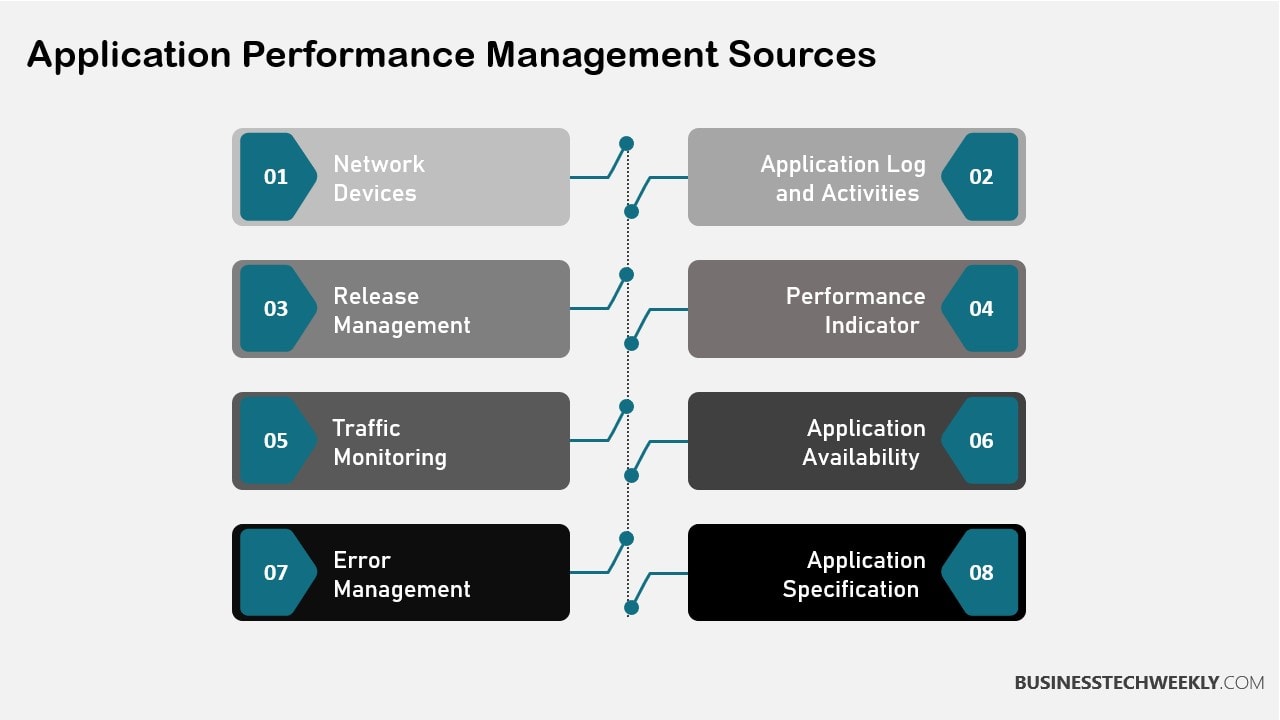
What are APM platforms?
APM platform provides an integrated, application monitoring platform using Artificial Intelligence and automation. Organizations can monitor the entire application stack for performance issues through the software platform APM.
With cloud-based software and hardware, numerous performance monitoring tools are available to monitor performance.
Organizations should consider the following two ways to select an APM software package. The team can employ different types of point solutions as per the default or design.
Advantages of a platform approach to APM
Some industry experts say APM platforms lack the innovation and depth of application component deep dive capabilities necessary to maintain the pace of the evolving APM market. It might also occur on many traditional APM tools and platforms.
Nevertheless, a cloud-native platform with a simple automated deployment model like Dynatrace can offer broad technical coverage throughout the stack, including the bespoke points solutions.
What Metrics Should you Monitor?
Response time can be measured to determine how quickly web requests are processed.
Errors should be monitored to identify any issues affecting the end user experience, digital experience monitoring, monitoring and the application’s performance.
Throughput can be measured to understand the number and error rate of requests the application can handle.
Response Time
Response time is an important metric to monitor when assessing the performance of a server monitoring an application.
It can be monitored using various techniques, such as audit logging or resource usage tracking.
By measuring response times, one can determine how quickly requests are being processed and investigate any issues that may arise from slow processing speeds.
This data can be used to identify areas where speed improvements should be made, ensuring they remain efficient while also providing users with the best experience possible.
Monitoring response time should be part of any organization’s regular performance evaluation process.
Errors
Errors are another critical metric to monitor when assessing load testing the performance of an application environment.
This can be monitored through error logging, which captures any unexpected behavior or results arising from a system’s code execution.
Error debugging should also be employed to determine the root cause of any issues identified by error logging and assess why they occurred.
By doing this, one can identify where improvements must be made to reduce future errors, ensuring the reliability and stability of the operating systems administrators and the operating system itself for users.
In conclusion, monitoring errors should be integral to any organization’s performance evaluation process.
Throughput
In addition to errors, another important metric to measure when evaluating infrastructure monitoring the performance of an application is throughput.
Throughput is typically measured in terms of how much data can be processed within a given period or how efficiently resources are utilized.
This can be monitored through data logging, which captures any changes that occur over a specific duration and allows for analysis of resource usage patterns.
To further improve efficiency and throughput levels, it is also necessary to identify areas where modifications need to be made to optimize resource utilization.
By doing so, organizations can ensure their applications’ entire and entire infrastructure components remain reliable and perform optimally with minimal downtime.
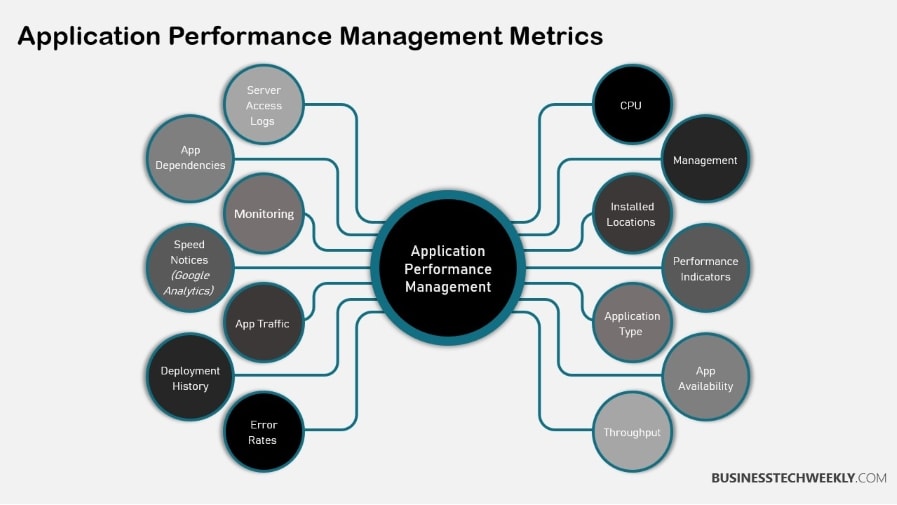
What Tools are Available for Monitoring Application Performance?
Understanding what metrics should be monitored to ensure efficient and effective, application monitoring, performance monitoring and management is essential.
Several tools are available for tracking container monitoring an application’s progress, ranging from real-time tracking to cloud-based solutions and predictive analytics.
One essential tool used for monitoring applications is server scaling through automated alerts. This feature allows users to adjust resources automatically according to demand.
It can result in cost savings as it prevents overprovisioning of resources that would otherwise not be utilized.
Additionally, this type of feature provides insight into how much capacity an application needs at any given moment. Also, it helps identify potential bottlenecks or other problems with the app’s infrastructure.
Other commonly used tools include cloud-based services such as Amazon Web Services (AWS), which provide access to a variety of features related to availability, scalability, and security; real-time tracking systems like Splunk, which allow users to observe system activity quickly; and predictive analytics platforms such as DataDog which can help detect emerging trends within an application’s data structure.
These various types of tools all play significant roles in ensuring the successful performance of an application by providing insights into resource utilization, identifying issues before they become serious problems, optimizing costs associated with running applications, and enabling proactive decision-making when it comes to maintenance tasks or updates.
Key features of APM tools
The integrated APM tool enables developers to track applications for performance over time. It helps IT professionals understand how dependent applications impact performance bottleneck and complex, application performance management problems.
APM tools are used to enhance the end-user device and end user experience monitoring by providing the organization with the ability to create actionable insights from the data collected.
In general, APM tools can do this in detail. An application may include some similar features: Stackify by Netreo.
How can you Use Application Performance Monitoring?
Application performance monitoring (APM) is an effective means of ensuring that applications are running optimally.
Proactive and application monitoring tools also allows for real-time visibility, which helps to identify potential issues before they become a problem.
Automated alerts can be set up to provide immediate notification when certain conditions or changes occur.
This can help with application scaling as it provides insight into resource utilization and allows for quick and actionable insights should any performance problems ever arise.
Using the APM tools also makes it easier to track the performance of applications over time and detect any anomalies or trends that may signal the need for further investigation or optimization.
It can also be used to compare different versions of an application and quickly determine which is performing better based on various metrics such as load times, memory usage, number/severity of errors, etc.
This information can then be used to troubleshoot any issues more quickly and decide how best to improve overall application performance.
What are the Challenges of Application Performance Monitoring?
Application Performance Monitoring (APM) is a valuable tool for organizations to measure the performance of their applications and ensure customer satisfaction.
This monitoring allows companies to collect data, identify any issues that might arise quickly, and make data-driven decisions regarding improvements.
However, there are several challenges associated with APM solutions that must be taken into account to maximize its benefit. Proactive approaches such as automation strategies and cloud-based solutions can help an organization overcome some of the difficulties faced by APM solutions typically provide for.
Automation helps reduce manual efforts and simplify tasks like database monitoring and application monitoring tools and server optimization infrastructure and application monitoring too. Cloud computing also provides scalability and flexibility, essential when dealing with large amounts of data or complex environments.
Additionally, it offers cost savings since the user does not have to purchase physical hardware, network components, or software licenses.
By utilizing these techniques, businesses can improve their application performance while ensuring efficient resource management.
Why cloud-native applications make APM challenging
Although APM has several advantages, it can become more difficult for developers to achieve.
Cloud-based app development produces much larger amounts of telemetry data, because it is composed of many different microservices dynamically rotating around the background.
Each MicroService exists for short periods, generating its telecommunication data that contributes primarily as noise. The most critical activity in this scenario is harder to detect within a given application infrastructure. Cloud-based apps also generate data.
How can you Optimize your Application Performance?
Visualizing application performance is essential to understanding the system is functioning. To achieve this, various tools can be used to provide data visualization and automated tests that help detect performance issues quickly.
Automated testing helps identify software bugs or vulnerabilities before they become problematic in production environments. In contrast, stress testing simulates real user monitoring and load on the application further to measure the application’s performance, and its response time under peak loads.
Code profiling shows where exactly memory and execution time is being spent when running certain functions, making it possible to optimize code for faster performance.
Moreover, proactive maintenance helps prevent problems before they occur by setting up health checks at regular intervals and monitoring resource usage over time.
All these measures together allow developers to ensure their applications remain optimized for optimal performance levels even as more users join them.
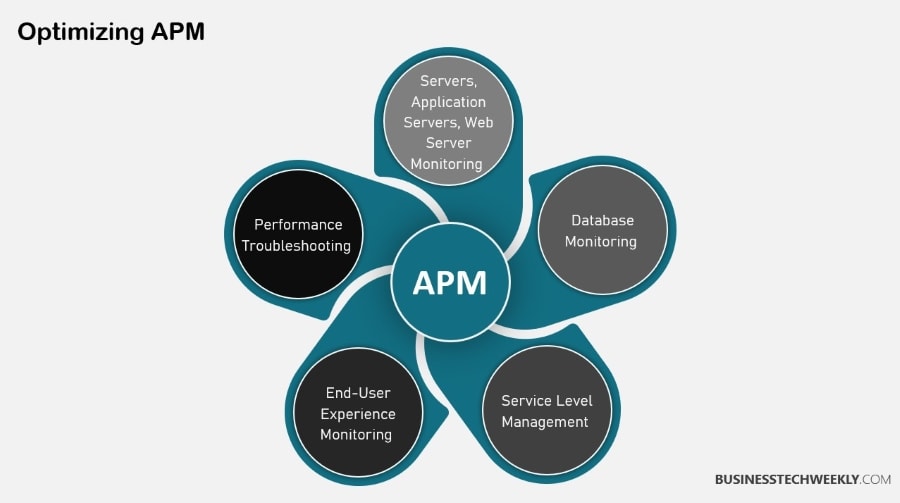
Application Performance Monitoring Best Practices
Application Performance Monitoring (APM) is the practice of tracking and analyzing performance metrics to ensure that applications run optimally.
This type of monitoring can help identify potential issues before they affect customer or end-user experience monitoring and provide insights into how developers can improve code profiling or ROI analysis.
To properly monitor application performance, organizations should implement many best practices:
- API testing: Testing APIs regularly ensures that data transfer between services is functioning correctly
- Code profiling: Analyzing the memory usage, CPU utilization, and other resource-intensive operations helps identify areas for improvement
- Alert automation: Automating alerts to notify stakeholders when thresholds are exceeded allows teams to respond quickly with appropriate action plans
- Root cause analysis: Investigating root causes of incidents helps pinpoint where problems originated so that similar issues can be avoided in the future
- ROI analysis: Understanding the value provided by APM investments provides valuable insight into whether or not such investments are worth pursuing
Understanding these best practices will help organizations maximize their use of the APM platform for business transactions and improve application performance and customer experiences.
Conclusion
Application performance monitoring is an essential practice for business outcomes in the application environment of any organization.
It allows organizations to identify potential issues, optimize their applications and ensure optimal end-user experience and satisfaction.
By utilizing various metrics and best practices, organizations can effectively use Application Performance Monitoring tools to monitor their applications to improve reliability and performance.
Successful application performance management and other application monitoring best practices requires a comprehensive approach to application monitoring best practices that considers the complex application performance management problems discussed above and related challenges.
Doing so will enable companies to maximize the benefits of this vital technology tool.

